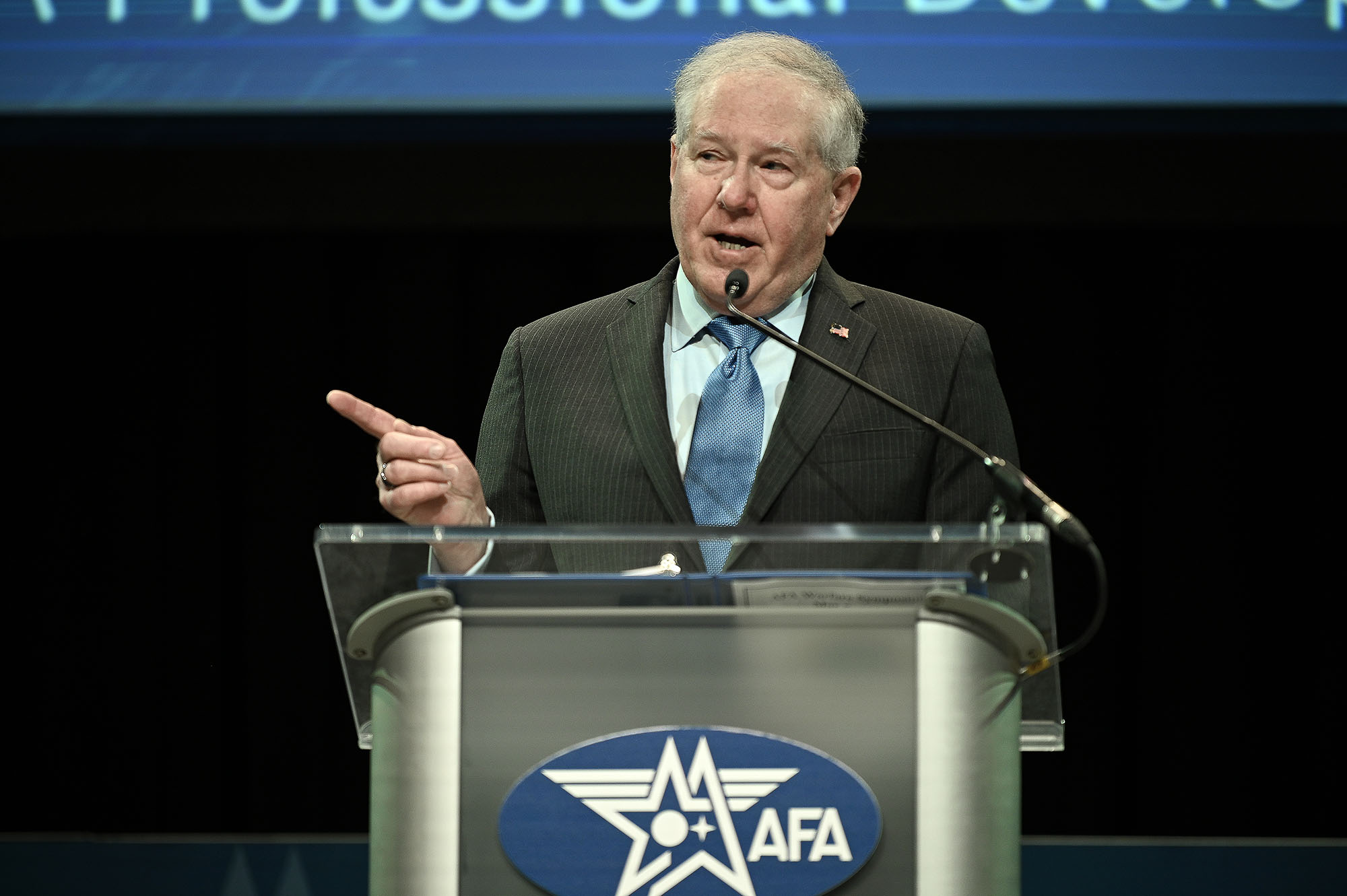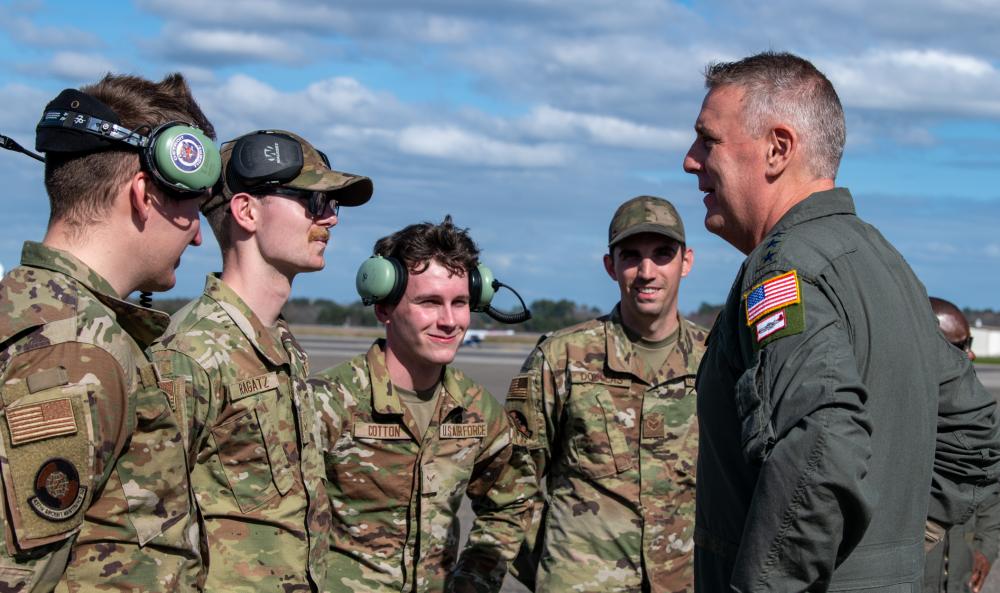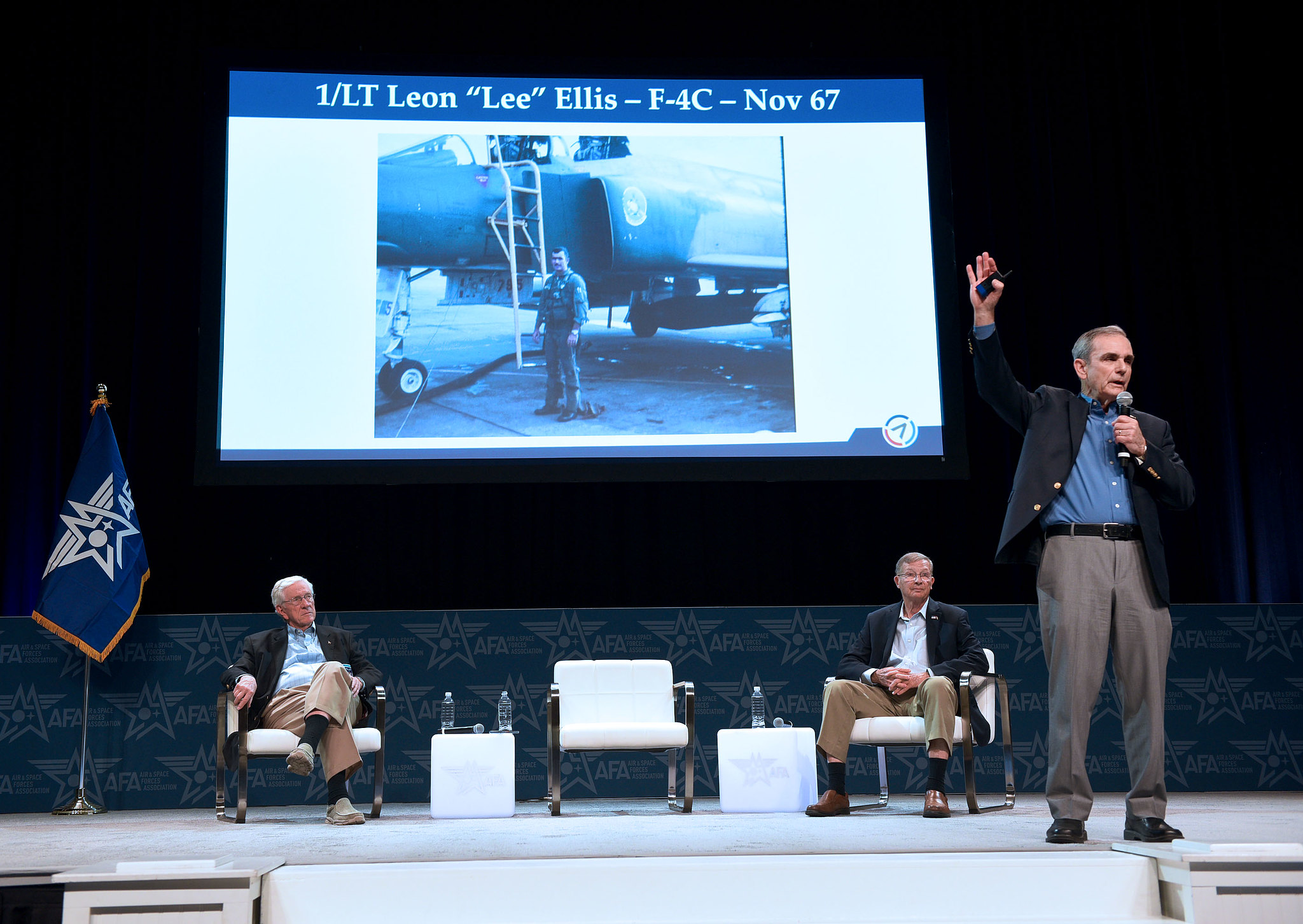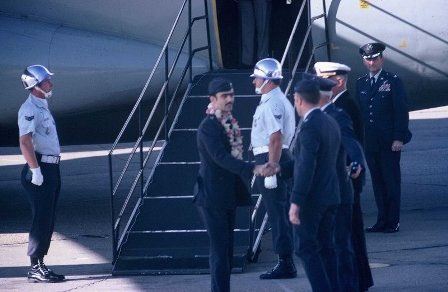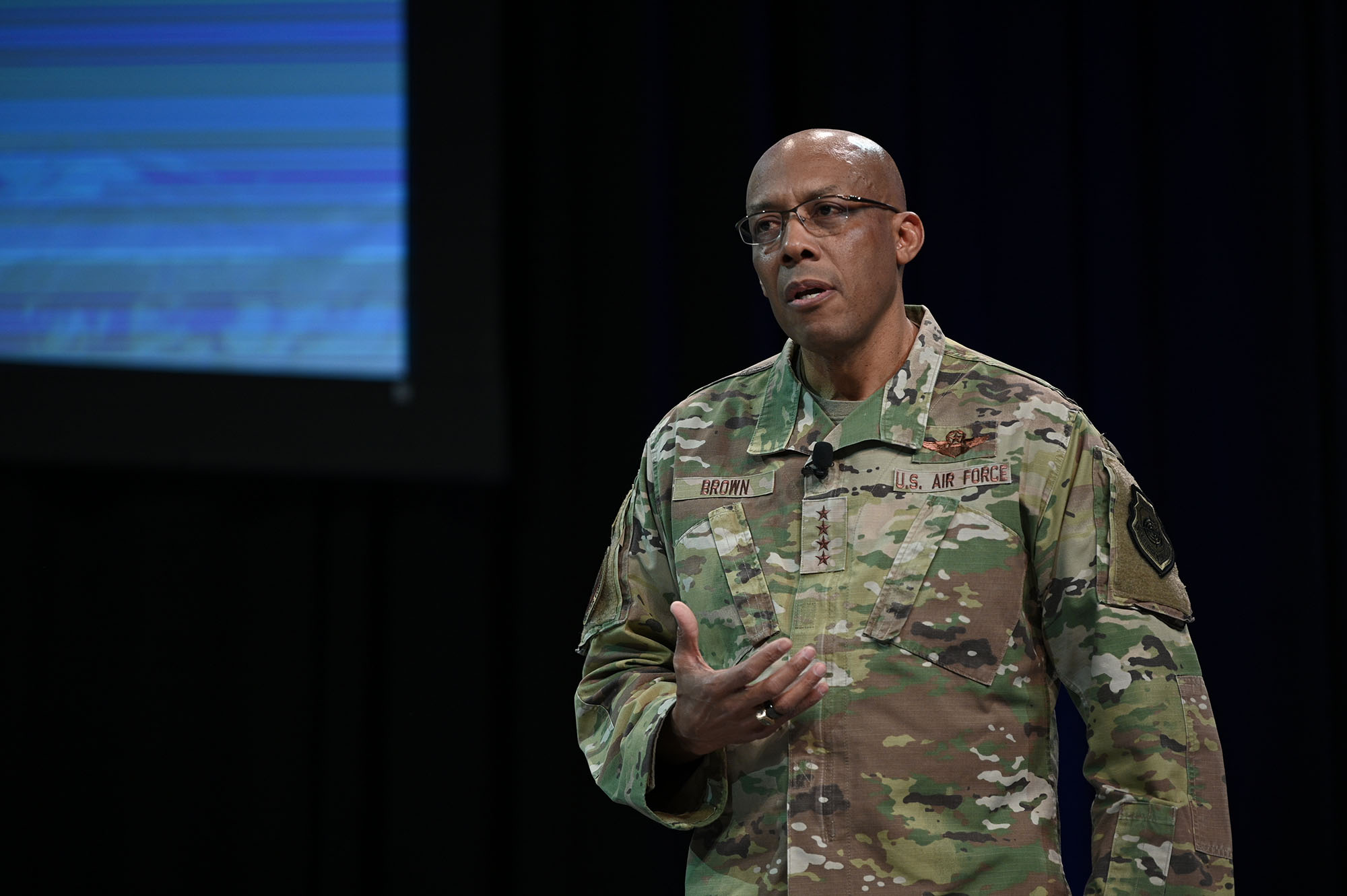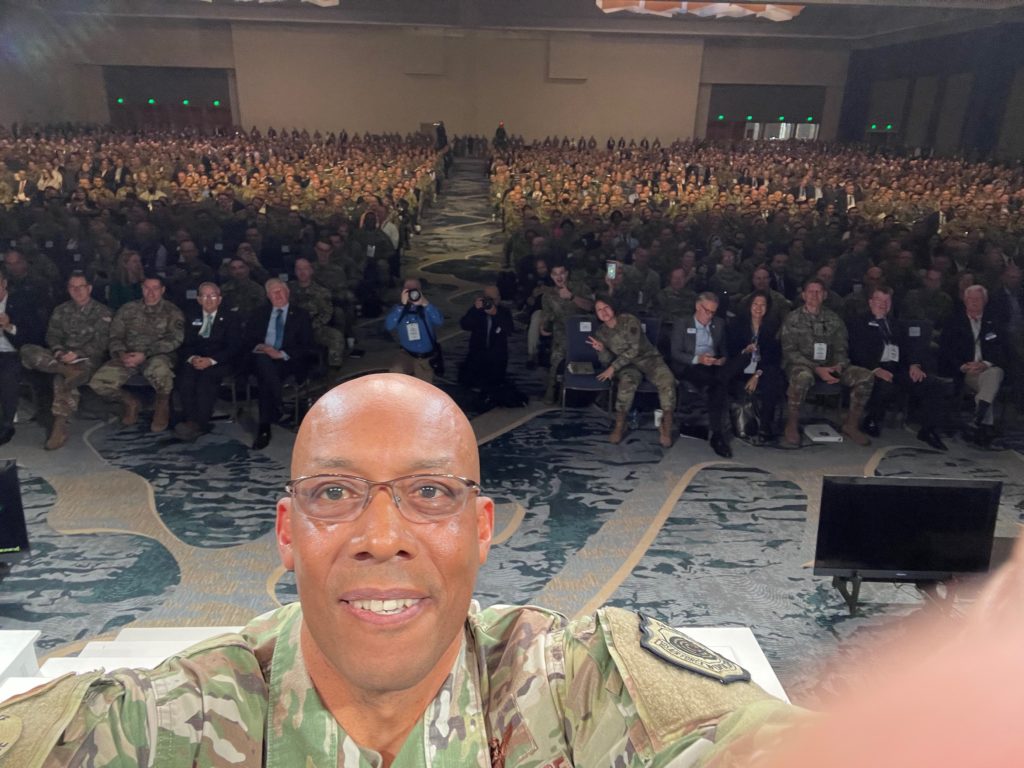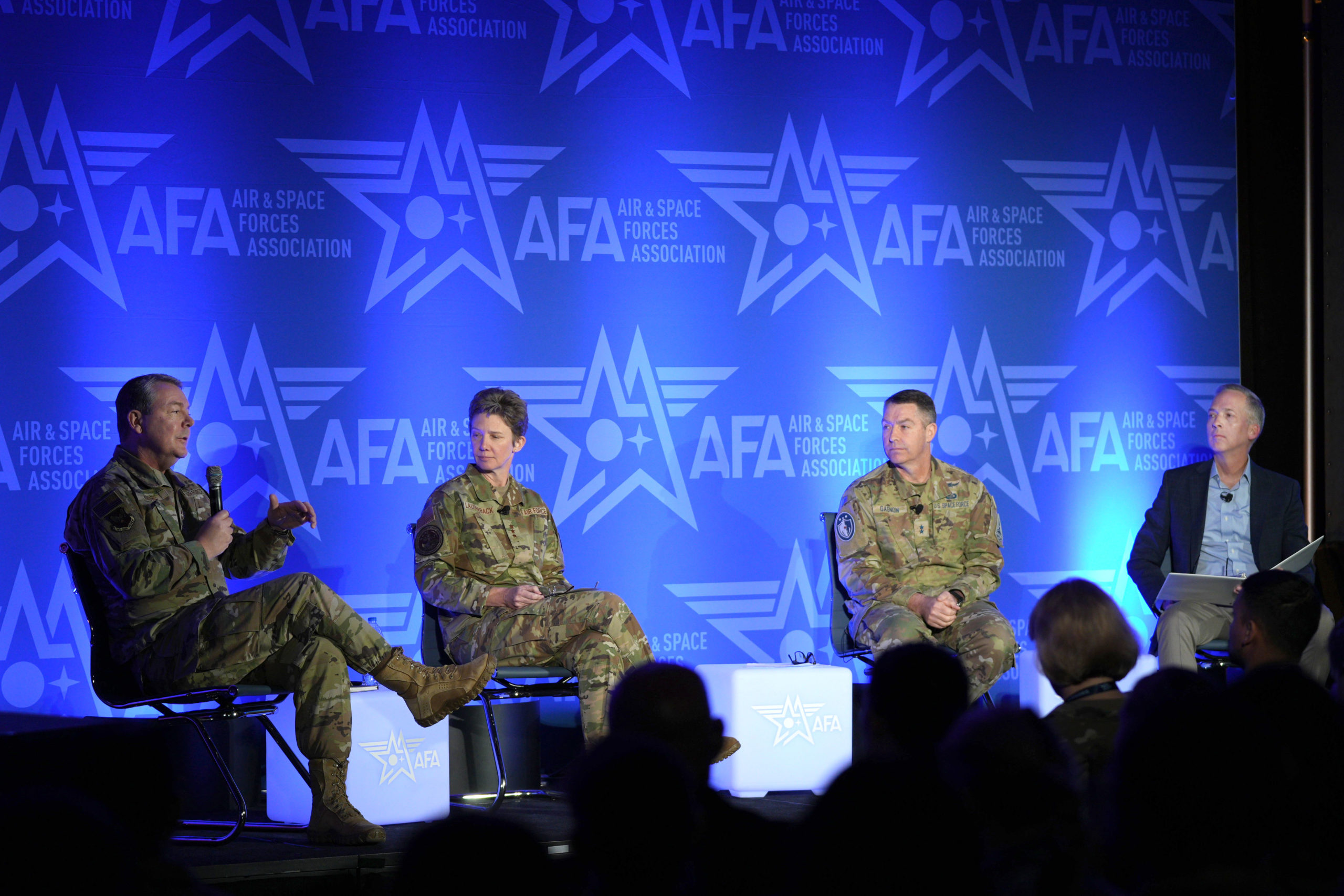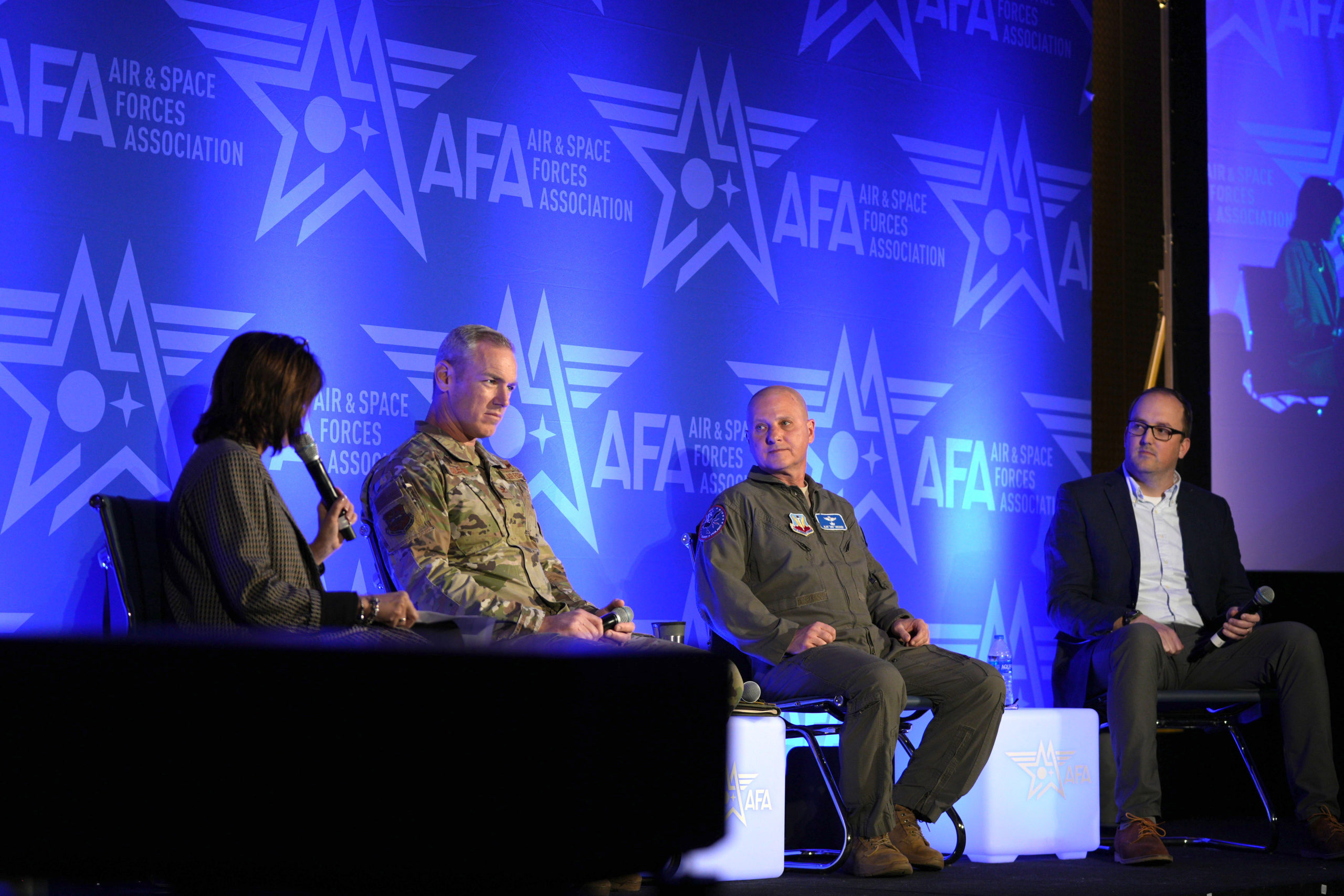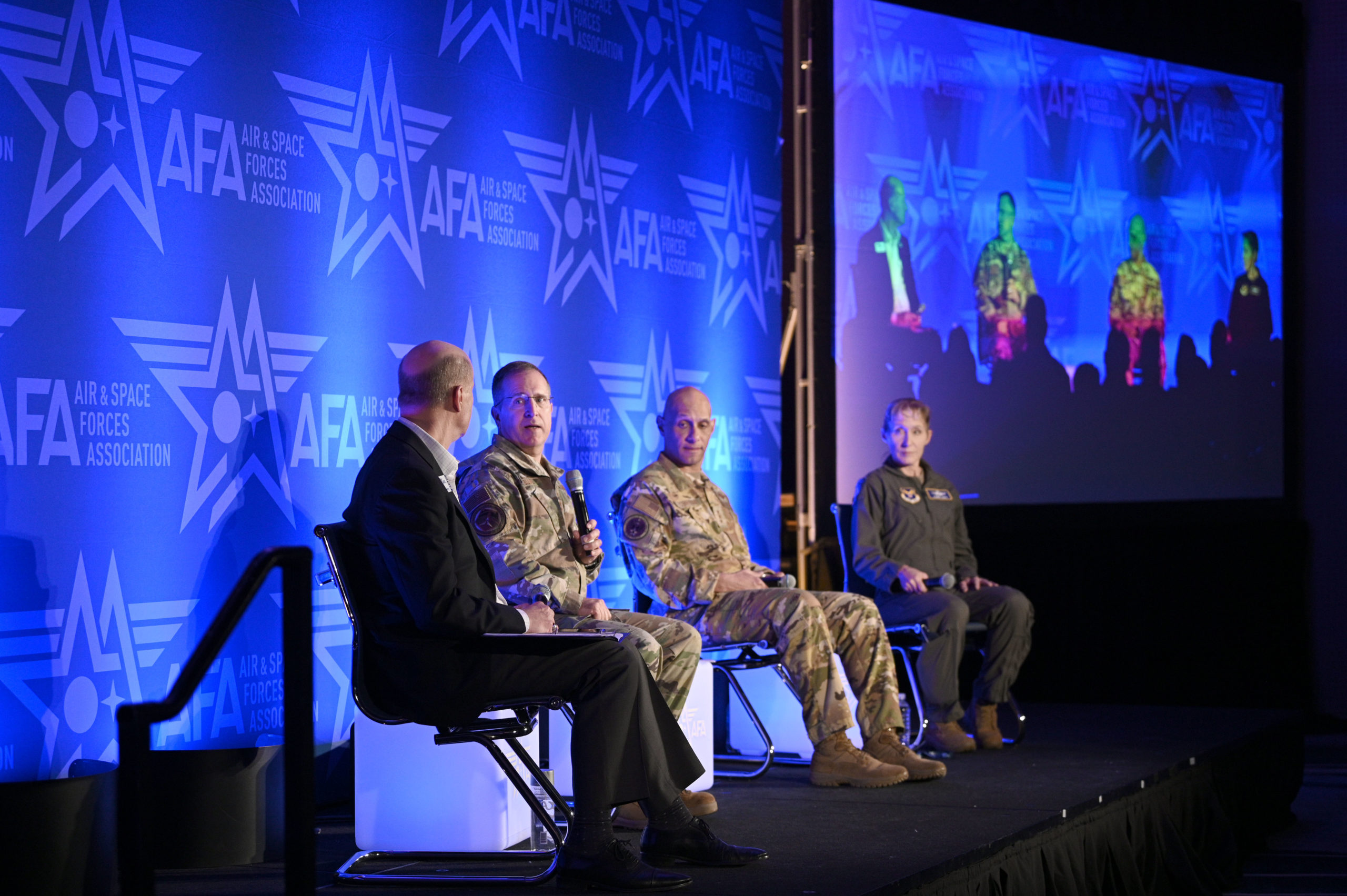AURORA, Colo.—Department of the Air Force leaders have sweeping plans for the year ahead, promising initial work on several futuristic headline programs. And details on the Air Force’s priorities are soon to be revealed in detail in the fiscal 2024 budget request.
But whether Congress will come up with the money is an open question.
“It will soon fall to the new Congress to enact both an authorization and appropriations bill on time,” Air Force Secretary Frank Kendall said in a keynote address at the AFA Warfare Symposium on March 7. “The DAF leadership team is ready and eager to work with Congress.”
But lawmakers are currently locked in a bitter fight over raising the debt limit, which caps how much money the government can borrow. The debate is likely to become more heated when the Biden administration releases its 2024 budget request in the coming days. After the 2022 midterm elections, Congress is split with Republicans controlling the House and Democrats in charge of the Senate. Brinkmanship could lead to a government shutdown if the debt limit is not raised.
It is still several months until the new fiscal year starts on Oct. 1. But uncertainty regarding the budget has become an ongoing concern. In 13 of the last 14 years, Congress has started fiscal year under a continuing resolution, which keeps funding at current levels as a stopgap measure. Congress only approved a fiscal 2023 budget in late December after burning through multiple CRs.
Even the National Defense Authorization Act, generally considered must-pass legislation, has been delayed past the new fiscal year multiple times recently.
Kendall hopes he can explain why that would be harmful to the Department of the Air Force.
In his speech, Kendall talked about rapidly fielding the B-21 Raider stealth strategic bomber, 1,000 Collaborative Combat Aircraft, and 200 Next Generation Air Dominance platforms to replace current platforms—just some highlights of where the Air Force wants to go.
“The many new efforts I have described and that we have spent over a year analyzing and planning cannot begin without Congressional approval. My greatest fear today is a delay or even worse a failure to provide the Department of the Air Force and Department of Defense with timely authorization and appropriations. That would be a gift to China. It’s a gift that we cannot afford,” Kendall warned.
In the House, members have set up a select committee on threats from the Chinese Communist Party. But whether Congress will heed Kendall’s warning is unclear.
Speaking to reporters later in the day, Kendall expanded on his concerns. He said he believes he has a good dialogue with leading members of relevant committees who are familiar with defense issues. While those members may fight over specific programs and the topline figure, they understand that the DOD needs a budget and NDAA to function properly.
“It’s never always 100 percent or perfect, but by and large we get very good support,” Kendall explained. “People take national security seriously.”
Kendall is particularly hopeful Congress will be receptive to the Air Force’s messaging. He said during the previous Congress, his office spent time briefing members on threats. Now, as the Air Force looks for money to disperse and expand its airbases under Agile Combat Employment and the Space Force aims to launch more proliferated satellite constellations, Congress is aware of the growing threat from China that has prompted those moves—something Kendall has relentlessly hammered home.
“We’re going to have a good story to tell,” Kendall told reporters. “I think we’re going to have a receptive audience in our committees of jurisdiction. I feel pretty good about that part of Congress. What I’m worried about is political gridlock.”
As has become common practice in Washington, if the budget can’t be passed, a CR can be passed to avert a government shutdown. But CRs halt “new starts”—projects or activities that were not previously funded or authorized in the prior year’s budget.
“The CCA is one of them, for example,” Kendall said. “That’s a major new start.”
Funding questions go beyond advanced, new programs. Speaking to reporters, Air Force Chief of Staff Gen. Charles Q. Brown Jr. said increasing the Air Force’s precision munitions supply, which wargames have shown would quickly be exhausted if the U.S. were to get into a war with China, requires a “predictable budget.”
Ultimately, the Air Force and Space Force may be subject to the whims of some lawmakers, no matter how important their missions.
“I can foresee some difficulties as we move forward,” Kendall said. “Because you can’t go faster until you can start and we can’t start until we have the authorizations and appropriations.”
